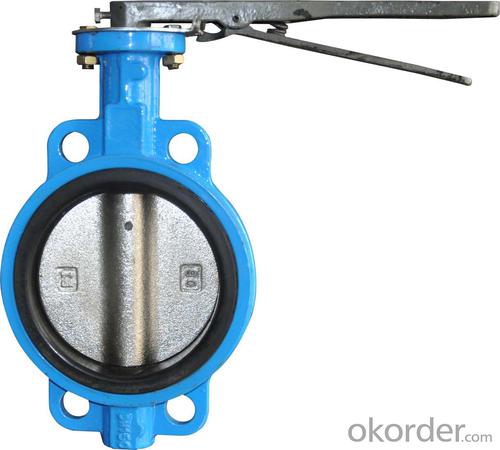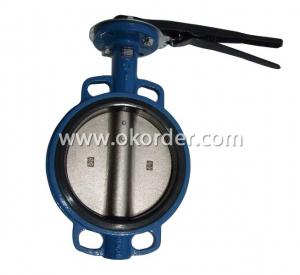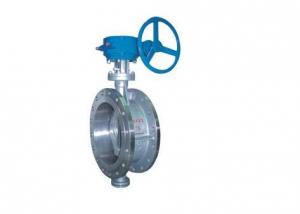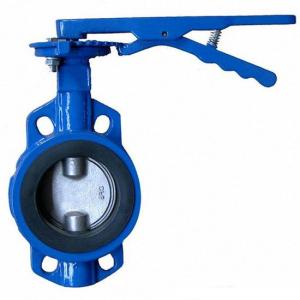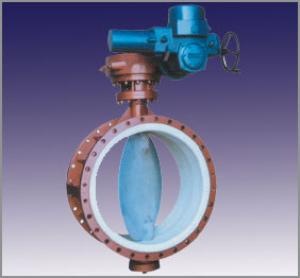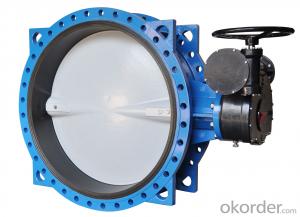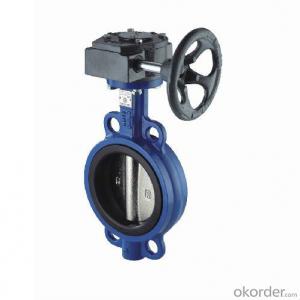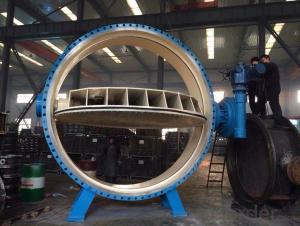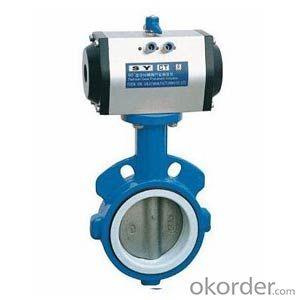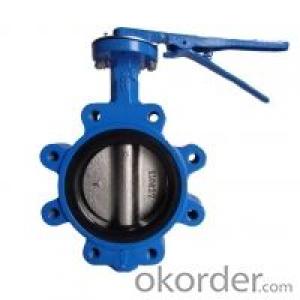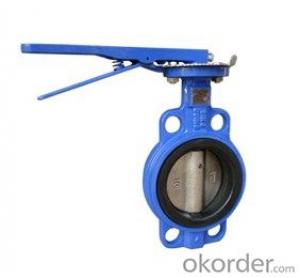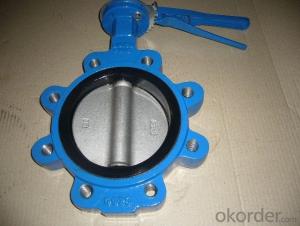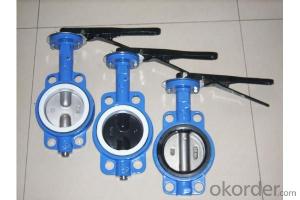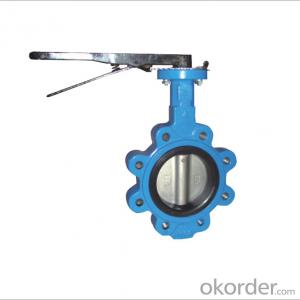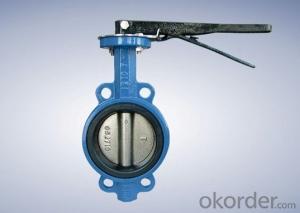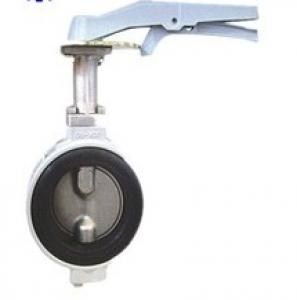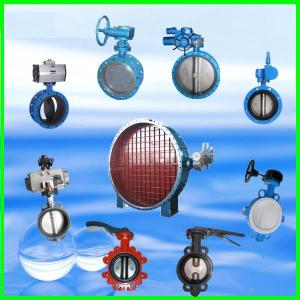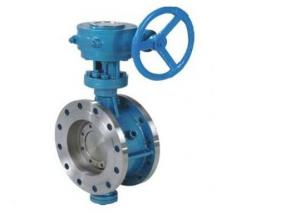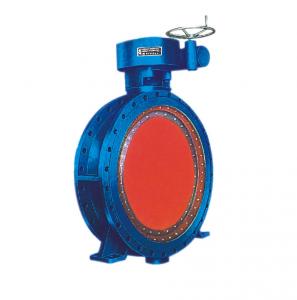Lug Type Butterfly Valve Without Pin Ductile Iron DN130
- Loading Port:
- Tianjin
- Payment Terms:
- TT OR LC
- Min Order Qty:
- 50 set
- Supply Capability:
- 20000 set/month
OKorder Service Pledge
Quality Product, Order Online Tracking, Timely Delivery
OKorder Financial Service
Credit Rating, Credit Services, Credit Purchasing
You Might Also Like
Centerline structure,pinless double half shaft design.
Disc has two-way bearing, no installation direction requirements.
Non-backed replaceable seat with good performance and a longer working life.
Square and short neck for lable use and cost saving.
Easy installation, no need flange gasket.
| Size | DN50mm-DN600mm |
| Design standard | API609/EN593 |
| End flange | DINPN10/PN16, BS4504PN10/PN16, ANSI class125#/class150# |
| Face to face | API609/EN558-1 |
| Top flange | ISO5211 |
| Body | Ductile iron/Cast iron |
| Disc | Ductile iron/CF8/CF8M/C95400/C95500 |
| Stem | SS420 |
| Seat | EPDM/NBR/Viton/PTFE |
| Actuator | Bare shaft/Lever/Gearbox and handwheel |
| Coating | Epoxy/Nylon/PTFE |
| Pin | With out pin |
| Suitable medium | Water/Seawater/Sewage/Air/Foodstuff/Oil |
- Q: What does "C" in D971F-16C DN450 RF mean for electric butterfly valves?
- C represents the valve body and the material is cast steel;D stands for butterfly valve; 9 stands for electric; 7 stands for clip type; 1 represents middle line butterfly valve; 16 stands for nominal pressure 1.6Mpa; RF stands for flange joint; in the form of protruding surface.
- Q: How can one - way sealed butterfly valves and two-way sealed butterfly valves be distinguished?
- One way sealing butterfly valve is the front of the butterfly valve. When it closes, it must face the direction of the medium. The medium flows only in one direction, and the arrow on the valve body indicates the direction of the flow direction of the medium. Attention should be paid to the flow direction of the medium during installation. The two-way sealing butterfly valve is that the butterfly plate can face or back the direction of the medium, and the installation needs no attention to the direction of the flow of the medium, and the valve body also has no indication of the direction of the flow direction of the medium. Two way sealing butterfly valve stem force is greater than one-way butterfly valve stem. Design, the same diameter, pressure butterfly valve, two-way sealing butterfly valve stem diameter than one-way sealing butterfly valve stem diameter.
- Q: What's the difference between a clip type turbine butterfly valve and a flanged turbine butterfly valve?
- For clip butterfly valves, there are no flanges at the ends of the butterfly valve. There are only a few guide bolts. The valve is connected with the end flange with a set of bolts / nuts.In contrast, the demolition to facilitate some of the lower cost of the valve, but the drawback is that a sealing surface problems, the two sealing surfaces have to be taken apart.Flange butterfly valve at both ends of the flange, and pipe flange connection. The seal is relatively more reliable, but the valve is of relatively high cost.
- Q: What do D71, D371 and D341 represent in butterfly valves?
- D71 stands for middle line to clip butterfly valveD371 represents the worm wheel centerline pair clip butterfly valveD341 stands for worm gear flange butterfly valve
- Q: Where are the exhaust valves, mud valves and butterfly valves?
- The exhaust valve is used for the heating of the independent heating system, central heating system, heating boiler, central air conditioning, floor heating and solar heating system.Mud valve, also known as cover valve, commonly used in urban water plants, sewage treatment plants sedimentation tank bottom discharge sludge.Butterfly valve used in furnace, coal gas, natural gas, liquefied petroleum gas, city gas, hot and cold air, chemical smelting and power generation environmental protection engineering system, conveying a variety of corrosive and non corrosive media pipeline, used to adjust and cut off the media flow.
- Q: What are the butterfly valves models?
- Divided by work pressure:(1) vacuum butterfly valve. Working pressure is lower than the standard atmospheric pressure butterfly valve.(2) low pressure butterfly valve. Butterfly valve with nominal pressure PN<1.6MPa.(3) medium pressure butterfly valve. Butterfly valve with nominal pressure PN 2.5--6.4MPa.(4) high pressure butterfly valve. Nominal pressure PN is 10. 0--80.0MPa butterfly valve.(5) ultra high pressure butterfly valve. Butterfly valve with nominal pressure PN>100MPa.At work temperature:(1) high temperature. T>450 degrees C butterfly valve.(2) medium temperature butterfly valve. 120 C<t<450 DEG butterfly valve.(3) normal temperature butterfly valve. A 40C<t<120 degree C butterfly valve.(4) low temperature butterfly valve. One 100<t< one, 40 degrees C butterfly valve.(5) ultra low temperature butterfly valve. T< one 100 degrees C butterfly valve.
- Q: What's the difference between butterfly valves and check valves?
- Butterfly valve is manual, only switch function.The check valve is an automatic valve, which prevents backflow of the pipe medium.
- Q: Three eccentric hard sealing butterfly valve, why not fit in the end of the pipe?
- The sealing ring will hold up. It does not fit in with the flange end of the pipeline, this addition is the most common and convenient pipeline after purge and easily add pipeline.
- Q: Butterfly valve, two-way pressure and one-way pressure what is the difference?
- The positive pressure and the reverse pressure, the pressure when the medium returns
- Q: I HAVE A 2003 FORD EXPEDTION THAT IS IDLE ROUGH,AND WILL EVENTUALLY STALL. TODAY I FOLLOWED THE PCV VALVE HOSE TO THE BACK OF THE THROTTLE BODY AND NOTICED THERE IS A BIG HOLE ON THE ELBOW OF THE HOSE. HOW CAN I CHANGE IT? CAN I JUST FORCE THE HOSE OUT AND SIMPLY PUT A NEW ONE? BEEN HAVING THIS ROUGH IDLE /STALL PROBLEM FOR A WHILE I CLEANED IAC VALVE, THROTTLE BODY CHANGED THE AIR FILTER AND ALSO CLEANED THE MASS AIR FLOW SENSOR, I HAVE A P0171 system to lean(bank 1) code
- just undo the clamps, and pull. it may need some wiggling and tugging, as its been on there for 9 years now without moving. put on your new hose, and replace the clamps, and youre done. next time, try not using all caps. it doesnt make us want to answer your question anymore just because its in caps, in fact, maybe a little less.
Send your message to us
Lug Type Butterfly Valve Without Pin Ductile Iron DN130
- Loading Port:
- Tianjin
- Payment Terms:
- TT OR LC
- Min Order Qty:
- 50 set
- Supply Capability:
- 20000 set/month
OKorder Service Pledge
Quality Product, Order Online Tracking, Timely Delivery
OKorder Financial Service
Credit Rating, Credit Services, Credit Purchasing
Similar products
Hot products
Hot Searches

